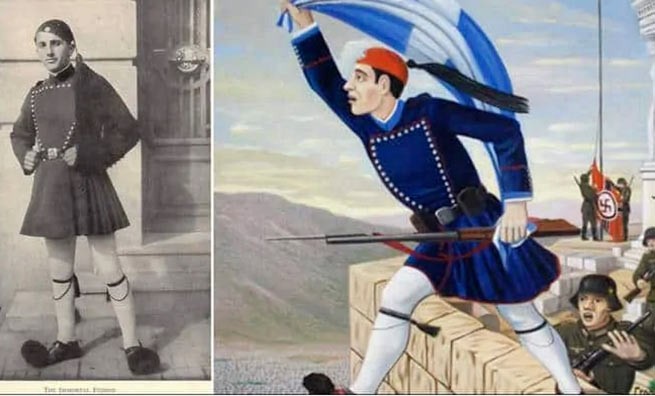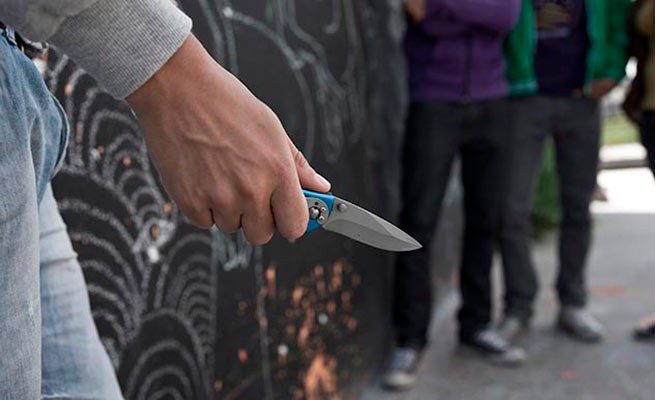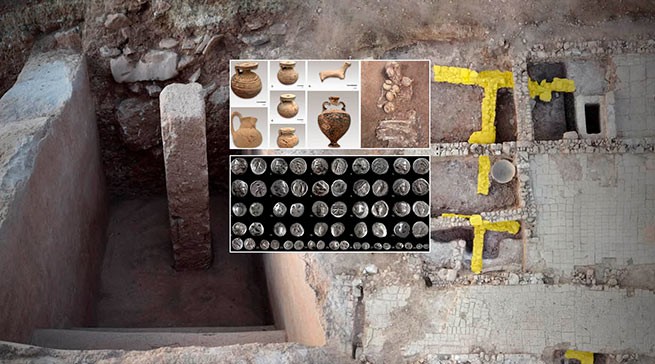During excavations at Hiliomodi, in Corinthia, part of the aqueduct from the time of Emperor Hadrian in the area of ancient Tenea, one of the largest hydraulic structures of the 2nd century AD in Greece, was discovered, as well as part of the prehistoric settlement of Tenea, dating back to the Early Bronze Age II (2600 – 2300 BC). . BC.).
A treasure of 29 ancient Greek silver coins of exceptional archaeological importance and rarity, dating from the end of the 6th century BC, was also found there. to the decade of 330 BC, many of which are among the rarest and most historic coins of ancient Greece.

As stated by the Ministry of Culture, systematic archaeological research in Hiliomodi-Corinthia will begin in October 2023, within the framework of the research project “Ancient Tenea”, under the leadership of archaeologist Dr. Elena Korka and with the assistance of the Directorate of Prehistoric and Classical Antiquities of the Ministry of Culture.

During the excavations, among other things, for the first time this year, part of an aqueduct from the time of Emperor Hadrian was discovered in the area of ancient Tenea, which accurately determines the course of one of the largest hydraulic structures of the 2nd century AD in Greece, which was supposed to supply water to Ancient Corinth from Stymphalia.

At the same time, part of the prehistoric settlement of Tenea, dating back to the Early Bronze Age II (2600 – 2300 BC), was found and excavated, which confirms the settlement of this territory before the fall of Troy.

In addition, a rich complex of buildings from the late Archaic period up to the Hellenistic period was discovered, with individual religious buildings, including three extremely complex cisterns, one of which with a cathode-anode scale.
“Of exceptional archaeological importance and rarity,” the Ministry of Culture continues, “is a treasure of 29 silver ancient Greek coins, which was found along with a portable clay altar, a miniature vase and a figurine of a horse and rider.”

The treasure included coins dating from the end of the 6th century BC. to the 330s BC, many of them are the rarest and most historic coins of Ancient Greece, such as the three staters of Helios minted at Olympia during various Olympic Games, the stater of Aegina with a land turtle instead of a sea turtle, the staters of Stymphalos, Argos and Opuntia from Locrus, as well as a Theban stater from the 5th century BC. e. with the image of Hercules drowning two snakes with his hands.
The presence of these treasures is associated with finds of cult purposes (female and animal figurines, miniature vases, etc.), which were discovered last year and continue to be discovered this year, giving a clear ritual character to the discovered areas. In the upper layers of the excavation two complexes of buildings from the Roman and Late Roman periods were discovered.

One with an area of 160 sq. m, which is a continuation of 281 sq. m 2022, with separate laboratories and storage facilities. The second building complex is an excavated area of 300 m² with separate rooms around a raised covered forecourt – a corridor 14.5 m long and 3.00 m wide, covered with clay slabs.
Finally, pit tombs from the Roman period and a cluster of richly carved Archaic tombs were excavated in the cemetery area and adjacent to the Roman funerary monument II 2022.







More Stories
How Plato spent his last night – what the found papyri showed
Eurovision 2024: the first rehearsal of Marina Satti in Malmö has ended
Palm Sunday